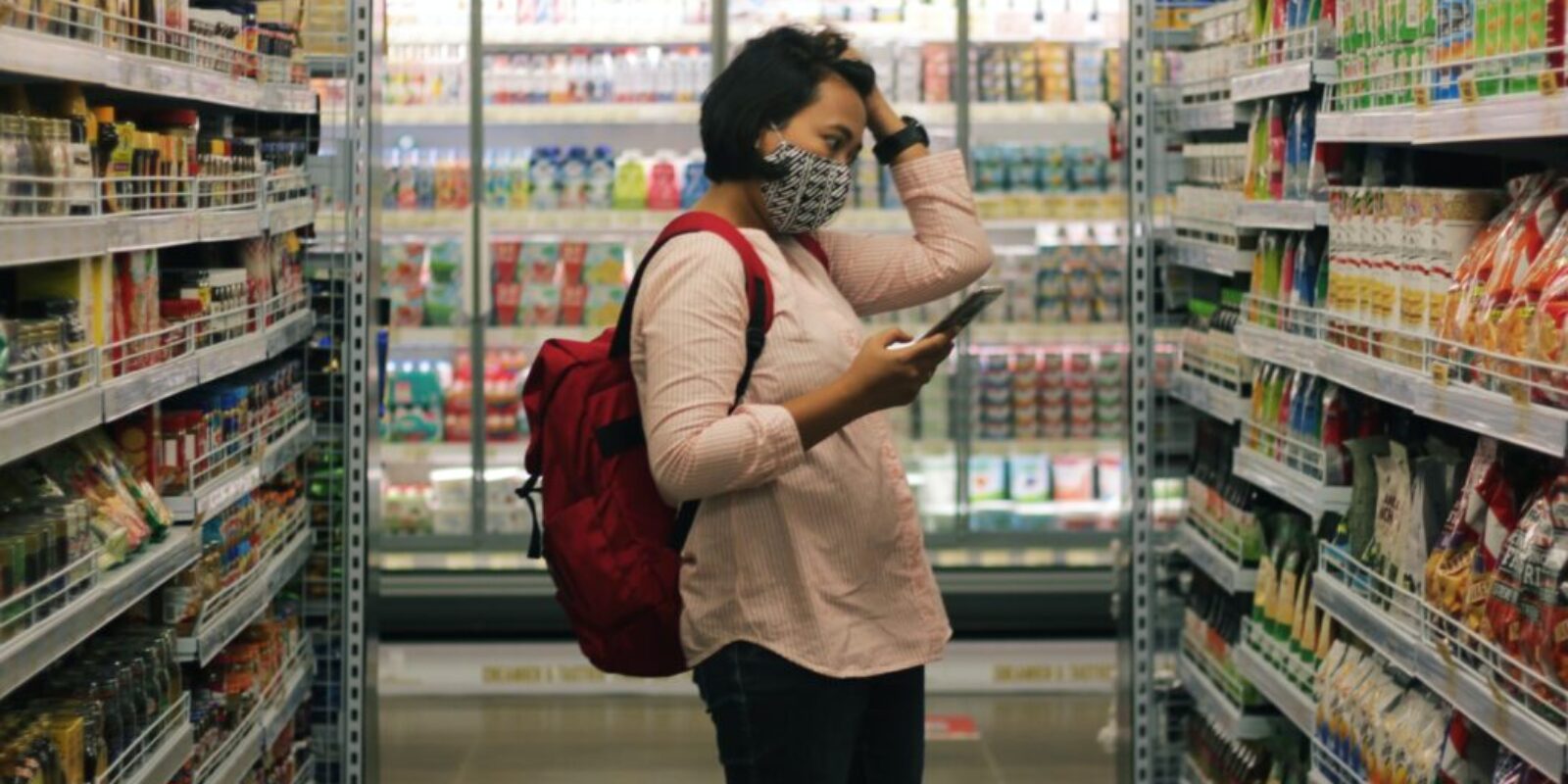This week’s ‘Global Food System Bite’ comes from an article titled Climate change: Do we have to rethink what we eat?
With the reality of climate change becoming more and more evident, it’s important to think about the impact our food choices have on the environment. The modern food system is a complex web of production and consumption that spans the globe. Thanks to advances in transportation and communication, we can now buy almost any product we want, whenever we want.
The cost of convenience: over-consumption
A century ago, the average grocery store was a fraction of the size it is today and carried only a limited selection of local, seasonal products. Today, thanks to advances in transportation and refrigeration, we enjoy a veritable cornucopia of foods from all over the world. We can buy asparagus in winter, pears from Argentina, Peruvian blueberries and Californian almonds – to name just a few of the several thousand products now available to us. This abundance of choice is something our ancestors likely never imagined, but it’s something we’ve become used to in recent years. While some may argue that this global food supply has led to a homogenisation of diets around the world, it’s hard to deny the convenience and variety that it provides. Whether you’re a fan of familiar comfort foods or adventurous new flavours, there’s something for everyone at today’s supermarkets.

However, this convenience comes at a cost. The food system is responsible for a significant portion of greenhouse gas emissions, and its reliance on fossil fuels is damaging to the environment. What’s more, the system often exploits workers and fails to provide adequate nutrition for all. So, can we change our eating habits? And if so, what would that look like?
US supermarkets offer a staggering number of products – more than 30,000 on average, according to the American Food Industry Association. In contrast, German supermarkets stock an average of 10,000 products. Though it may not seem like a huge difference, those extra items come at a cost. Food consumption is the main driver of negative environmental impacts generated by the average European citizen, according to the European Commission.
High-income countries have the highest per capita food consumption levels. At the same time, the UN estimates that households globally throw away 11% of the total food available for consumption. So why do we buy more food than we can eat? One reason may be that we underestimate how much food we need. Another possibility is that we choose foods that are easy to over-consume, such as processed snacks or sugary drinks.

According to Janet Chrzan, a nutritional anthropologist from the University of Pennsylvania, “we have an inborn desire as human beings, as biological beings, to ensure that we have food for ourselves and our children,” and “if you think that your environment is going to be risky, that you might not get a meal, or that you might run out of food in general, then you’re going to hoard food.”
How do we choose our food?
Besides the fact that humans need food to survive, there are a whole range of considerations influencing which products we buy at the supermarket. Shoppers are often heavily swayed by price — they choose what they can afford. But other factors such as marketing, health concerns, taste, convenience, sustainability and expressing identity or values might also play a role in the type of food we choose to buy.
For example, marketing campaigns can be very effective in convincing people to buy certain products. We might see an advert for a new type of chocolate and decide that we simply have to try it. Health concerns can also influence our choices — we might switch to low-fat milk if we’re trying to lose weight, for example. convenience is another important factor — if we’re short on time, we might choose a pre-prepared meal instead of cooking from scratch.
Sustainability is becoming increasingly important to many shoppers, who don’t want to buy products that have been sourced unethically or that have a negative impact on the environment. And finally, our food choices can also be influenced by our values or identity — vegetarians, for example, will only buy meat-free products.

All of these factors play a role in determining what we buy at the supermarket, but according to Stefan Wahlen, a food sociologist at the University of Giessen in Germany, says despite small blips, people tend to eat the same food 95% of the time. He claims that “you live in your routines, and even though you might be trying some new foodstuff, there’s little variation in what we actually eat,” and he says, adding that these routines help us in “coping with the complexity of our daily lives.”
When faced with an abundance of choice in the grocery store, consumers tend to make decisions that are quick and based on habit. Our consumer behaviour is notoriously difficult to change because food choices and eating patterns are so embedded in the way we live. But despite the challenges, there are ways to change our eating habits for the better. One key factor is to become more aware of the foods we eat and where they come from. Another is to take the time to plan meals and shop for ingredients, rather than relying on processed foods or take-out. With a little effort, we can all make choices that are healthier for both ourselves and the planet.
Can we change our consumption habits?
A recent study by the European Consumer Organisation found that two-thirds of consumers are willing to change their eating habits for environmental reasons. Many respondents said they would be willing to reduce food waste at home, buy more seasonal fruit and vegetables, and eat more plant-based foods. However, only one in five said they would be willing to spend more money on sustainable food. This discrepancy between attitudes and behaviour is known as the “attitude-behaviour gap” or “value-action gap.” It suggests that while many consumers care about the environment, they don’t necessarily choose more eco-friendly products. This may be due to a number of factors, including brand loyalty, taste preferences, or price. Whatever the reason, it’s clear that there is a disconnect between what consumers say and what they do when it comes to sustainability.

Deciding which foods to buy can be a daunting task for even the most experienced shopper. With so many options available, it can be difficult to know which products are the best choices for both our health and the environment. Unfortunately, most food labels don’t provide enough information to make informed decisions about sustainability. Chrzan says that this information should be included on food labels, along with the carbon footprint and water usage of the product. With this information readily available, consumers would be able to make more ecologically responsible choices when they do their grocery shopping. In addition, food producers would be incentivised to create more sustainable products, leading to a healthier planet overall.
As the world becomes more aware of the environmental impact of consumer choices, there is an increasing push for measures that will encourage people to make more eco-friendly choices. Some of the measures that have been suggested include subsidies and taxes to make eco-friendly products more affordable, as well as “nudging” consumers by changing the way products are packaged or increasing the visibility of more sustainable options in supermarkets. However, it is important to note that no single measure is likely to be effective in isolation. A comprehensive approach that takes into account the different motivations and constraints of consumers is likely to be most successful in promoting sustainable consumer habits.
There is no easy solution. Our eating habits are shaped by our cultures and traditions, as well as by our personal preferences. But it is clear that the current food system is not sustainable. If we want to protect the environment and ensure that everyone has access to nutritious food, we need to make some changes. Perhaps we could start by eating less meat, or by supporting local farmers. Or maybe we could waste less food, or cook more meals from scratch. Whatever the case may be, it’s time for us to reevaluate our relationship with food and make some changes.



